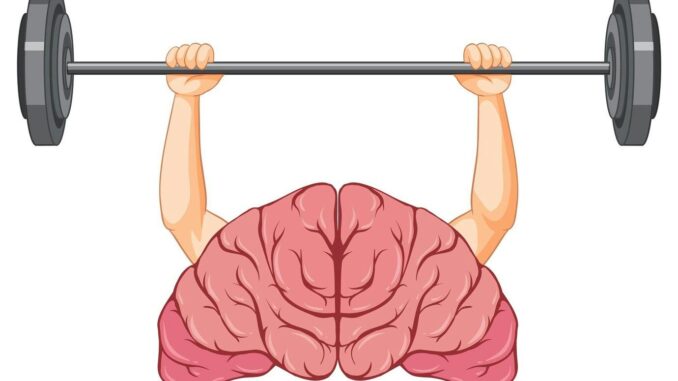
Muscle memory is a captivating hypothesis with respect to athletic training. What this means is that the mind can recall and perform intricate motions without conscious effort because of repetitive practice. It really is a kind of procedural memory which allows athletes to do something precisely and consistently by turning compound actions into smooth automatic responses.
Understanding Muscular Memories
Muscle memory has its roots within neurobiology. The brains of athletes who have practised certain moves over and over again will make new neural pathways which correspond with those movements more frequently. This helps the body become able to carry out these motions automatically when needed most since they are much faster compared to others that were not exercised well enough.
The reason behind this is that through frequent repetition, the motor cortex in the brain gets better at directing particular muscles involved in such activities, thus making them second nature. As soon as these synapses harden up, any player can make them happen easily than before even if their performance level was lower then leading into more accuracy while performing skills. For those interested in applying strategic insights to their favourite games, melbet Bangladesh provides a platform to bet on various sports, enhancing interaction with the sports they love.
The Role of Muscle Memory in Sports Training
Muscle memory greatly contributes towards making successful sportsmen as it allows them to perform intricate movements accurately. Here are some benefits:
- Better performance: Practising many times helps players execute actions seamlessly, thus ensuring optimum performance.
- Consistency: It ensures that athletes can always do a similar move all through, hence keeping up high standards during competitions.
- Reduced cognitive load: By making these motions automatic, game men are able to concentrate on tactics or decision-making rather than basics.
Also, another thing about muscle memory is that it helps prevent injuries by teaching correct form which may lead to strains or sprains if not followed properly. Therefore, overall success in any sport largely depends on how well an individual develops his or her physical abilities while at the same time taking care not to overwork themselves.


Methods for Boosting Muscle Memory
The ability to enhance muscle memory is critical for any athlete striving for peak performance. Progressive muscle relaxation and visualisation are two main techniques that can be employed in this regard. These approaches help players to perfect their skills by making movements automatic through mental and physical training.
Progressive Muscle Relaxation
For sportsmen wishing to improve their muscle memory, progressive muscle relaxation (PMR) proves itself as an essential method. Athletes can reduce overall coordination problems by relaxing different groups of muscles after tensing them one at a time systematically. It also enables them to let go of stress, which often interferes with smoothness and accuracy during the execution of moves.
Regular practice trains the body how to differentiate unnecessary from required tension, thereby leading to better flowing and controlled actions. A good example would be when a tennis player uses PMR to ease his or her shoulder muscles to achieve consistent power serves frequently. Incorporating such a technique into workouts greatly improves complex action representation in muscles, hence making it feel like second nature.
Visualisation Techniques
Visualisation is another powerful way of building muscle memory strength. Mental imagery or visualising involves detailed imaginary repetition where athletes see themselves performing specific tasks successfully over again, thus strengthening related neural pathways. They can boost self-assurance as well as accuracy levels by picturing success in various events within this category.
For instance, an acrobat may go through each twist perfectly executed during every flip mentally while practising physically. According to research findings, mental practices alongside physical training embed motions deeply into the motor cortex of the brain, hence preparing both mind and body for real-life execution. Sportsmen who regularly employ visualisation methods perform much better because it sets them up adequately ahead of actual performance.
Case Studies on Muscle Memory in Elite Athletes
Muscle memory is what elite athletes rely on most of the time to perform at their peak. A good illustration is Tiger Woods – his golf swing represents muscle memory in action. He has practised it for many years so that now he can do it exactly the same way every time, which allows him to perform flawlessly under pressure.
Another great example would be Simone Biles’ routines where she demonstrates incredible muscular memorisation ability while doing complex flips and twists with amazing precision achieved by hours upon hours of repetitive training. These instances show how muscle memory permits performers to execute difficult moves seamlessly, even when they’re nervous or stressed.
Overcoming Challenges with Muscle Memory
Despite being beneficial, there are some difficulties that come along with having muscle memory:
- Unlearning bad habits: It’s hard for athletes to let go of ingrained bad habits, so it takes commitment to re-educate your muscles.
- Adjusting techniques: When old patterns are well established, it becomes challenging to refine or change a technique.
- Mental blocks: Sometimes psychological factors can interfere with the effective utilisation of muscle memory, leading to inconsistent performance.
Practice directed at specific areas coupled with mental conditioning and working closely with coaches or sports psychologists are some ways through which these problems can be dealt with. For example, one may practise new moves slowly and then increase speed gradually over time, thereby replacing old habits with better ones. Equally important is mental rehearsal, together with visualisation, which serves as a powerful tool not only for solidifying fresh patterns but also for breaking down mental walls that hinder progress.
Conclusion
Muscle memory forms the foundation of athletic training as it helps in enhancing performance and reducing the risk of injuries. Through regular drills aimed at improving skills, players can develop automatic responses necessary for success in their respective sports disciplines. Appreciating this aspect and making maximum use thereof allows individuals engaged in various games to attain peak levels while ensuring uniformity as well as accuracy throughout.